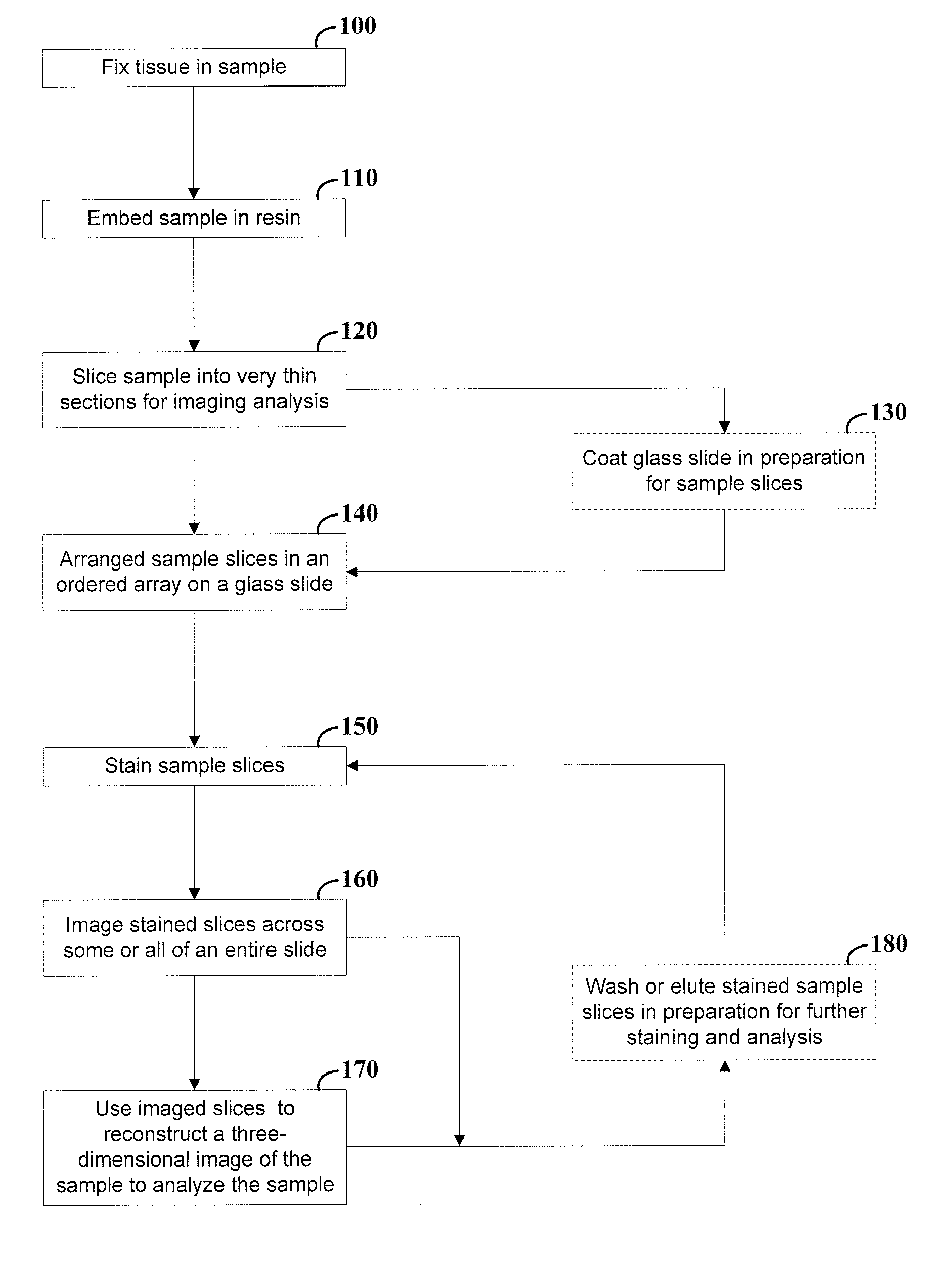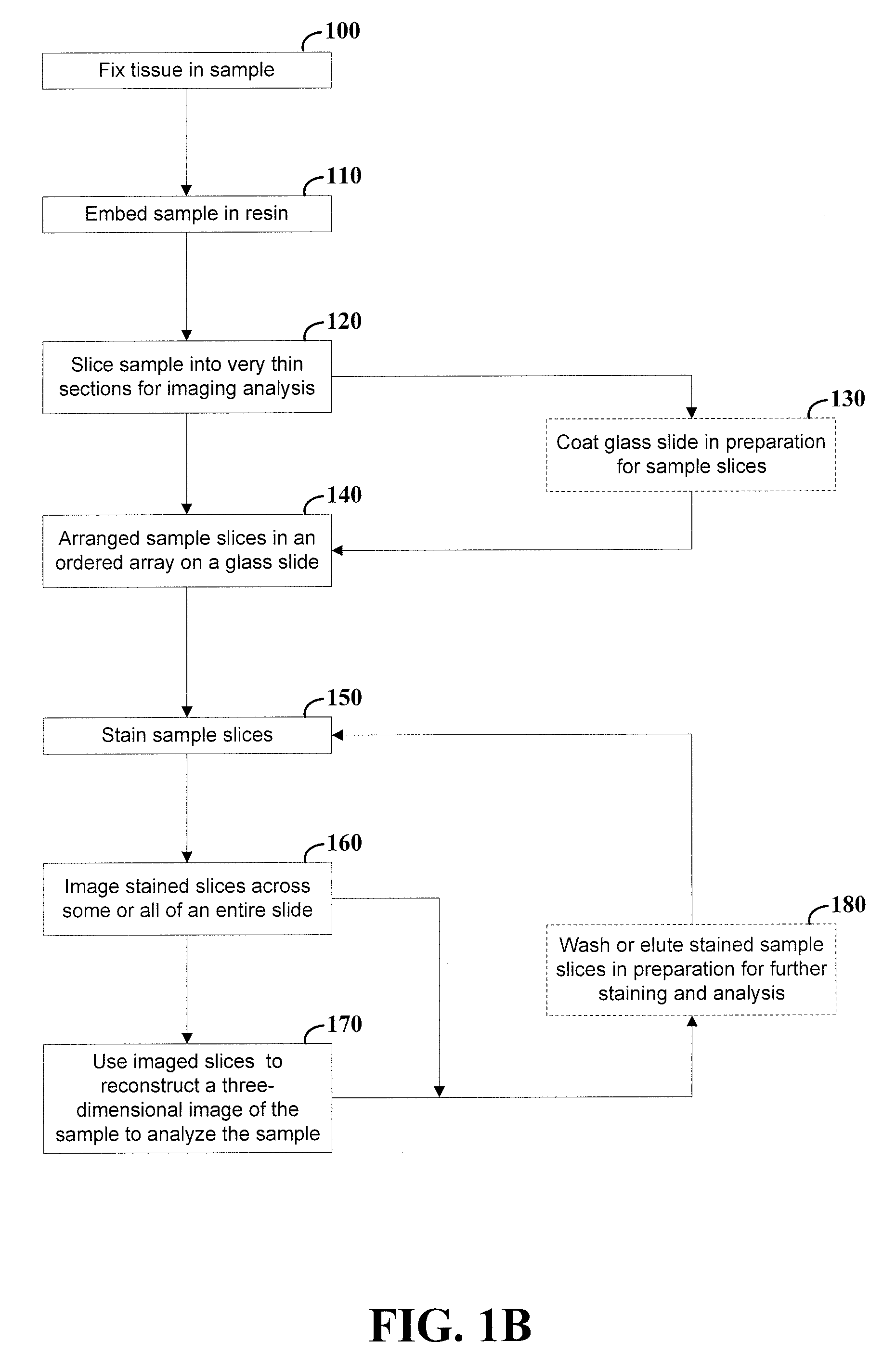Arrangement and imaging of biological samples
- Summary
- Abstract
- Description
- Claims
- Application Information
AI Technical Summary
Benefits of technology
Problems solved by technology
Method used
Image
Examples
Embodiment Construction
[0022]The present invention is believed to be applicable to a variety of different types of processes, devices and arrangements for imaging, and in particular, to approaches to serially imaging slices of a biological specimen for three-dimensional views of the specimen. While the present invention is not necessarily so limited, various aspects of the invention may be appreciated through a discussion of examples using this context.
[0023]According to an example embodiment of the present invention, the molecular architecture of cells and tissues are analyzed by physically sectioning a sample (e.g., a specimen) to make very thin sections of the sample. The thickness of the sections varies with different embodiments; in some applications, the section thickness is in a range of tens to hundreds of microns, and in other applications, the section thickness is similar to the thickness of sections used for electron microscopy (e.g., in a range of about 50-70 nm). A large number of the thin se...
PUM
 Login to View More
Login to View More Abstract
Description
Claims
Application Information
 Login to View More
Login to View More - R&D
- Intellectual Property
- Life Sciences
- Materials
- Tech Scout
- Unparalleled Data Quality
- Higher Quality Content
- 60% Fewer Hallucinations
Browse by: Latest US Patents, China's latest patents, Technical Efficacy Thesaurus, Application Domain, Technology Topic, Popular Technical Reports.
© 2025 PatSnap. All rights reserved.Legal|Privacy policy|Modern Slavery Act Transparency Statement|Sitemap|About US| Contact US: help@patsnap.com



